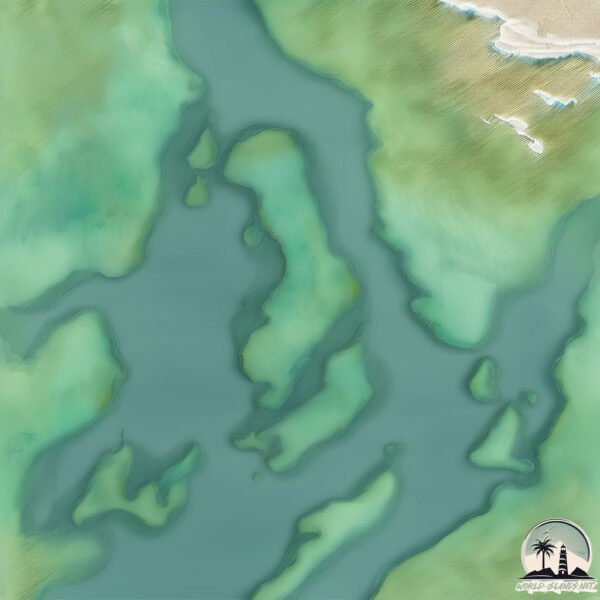Stark Islet

Welcome to Stark Islet, a Continental island in the The Coastal Waters of Southeast Alaska and British Columbia, part of the majestic Pacific Ocean. This guide offers a comprehensive overview of what makes Stark Islet unique – from its geography and climate to its population, infrastructure, and beyond. Dive into the details:
- Geography and Size: Explore the island’s size and location.
- Climate and Weather: Weather patterns and temperature.
- Topography and Nature: Uncover the natural wonders of the island.
- Infrastructure and Travelling: Insights on reaching, staying, and making the most of your visit.
- News and Headlines: Latest News.
Geography and size of Stark Islet
Size: 11.9 km²
Coastline: 42.4 km
Ocean: Pacific Ocean
Sea: The Coastal Waters of Southeast Alaska and British Columbia
Continent: North America
Stark Islet is a Medium Island spanning 12 km² with a coastline of 42 km.
Archipel: –
Tectonic Plate: North America – Covers North America and parts of the Atlantic and Arctic Oceans, characterized by diverse geological features and varying levels of seismic activity.
The geographic heart of the island is pinpointed at these coordinates:
Latitude: 55.41721751 / Longitude: -129.74230221
Climate and weather of Stark Islet
Climate Zone: Continental
Climate Details: Warm-Summer Humid Continental Climate
Temperature: Warm Summer
Climate Characteristics: Features warm summers and cold winters with consistent precipitation, common in higher latitudes.
Topography and nature of Stark Islet
Timezone: UTC-08:00
Timezone places: America/Los_Angeles
Max. Elevation: 120 m
Mean Elevation: 41 m
Vegetation: Evergreen Needleleaf Forest
Tree Coverage: 81%
The mean elevation is 41 m. The highest elevation on the island reaches approximately 120 meters above sea level. The island is characterized by Plains: Flat, low-lying lands characterized by a maximum elevation of up to 200 meters. On islands, plains are typically coastal lowlands or central flat areas.
Dominating Vegetation: Evergreen Needleleaf Forest
Dominated by evergreen coniferous trees such as pines and firs, which retain their needle-like leaves throughout the year. These forests are often found in cooler climates. Stark Islet has a tree cover of 81 %.
Vegetation: 4 vegetation zones – Diverse Island
Four distinct vegetation zones mark these islands as ecologically diverse. They might feature varied landscapes such as forests, beaches, grasslands, and rocky areas. Such diversity reflects the island’s complex ecological interactions and varied habitats, which can support a rich array of wildlife and plant species.
Infrastructure and Travelling to Stark Islet
Does the island have a public airport? no.
There is no public and scheduled airport on Stark Islet. The nearest airport is Hyder Seaplane Base, located 57 km away.
Does the island have a major port? no.
There are no major ports on Stark Islet. The closest major port is HYDER, approximately 58 km away.
The mean population of Stark Islet is 0 per km². Stark Islet is Uninhabited. The island belongs to Canada.
Continuing your journey, Pearse is the next notable island, situated merely km away.
Canada is classified as Developed region: G7: Group of Seven – Major advanced economies, including Canada, France, Germany, Italy, Japan, the United Kingdom, and the United States. The level of income is High income: OECD.
News – Latest Updates and Headlines from Stark Islet
Stay informed with the most recent news and important headlines from Stark Islet. Here’s a roundup of the latest developments.
Please note: The data used here has been primarily extracted from satellite readings. Deviations from exact values may occur, particularly regarding the height of elevations and population density. Land area and coastline measurements refer to average values at mean high tide.
